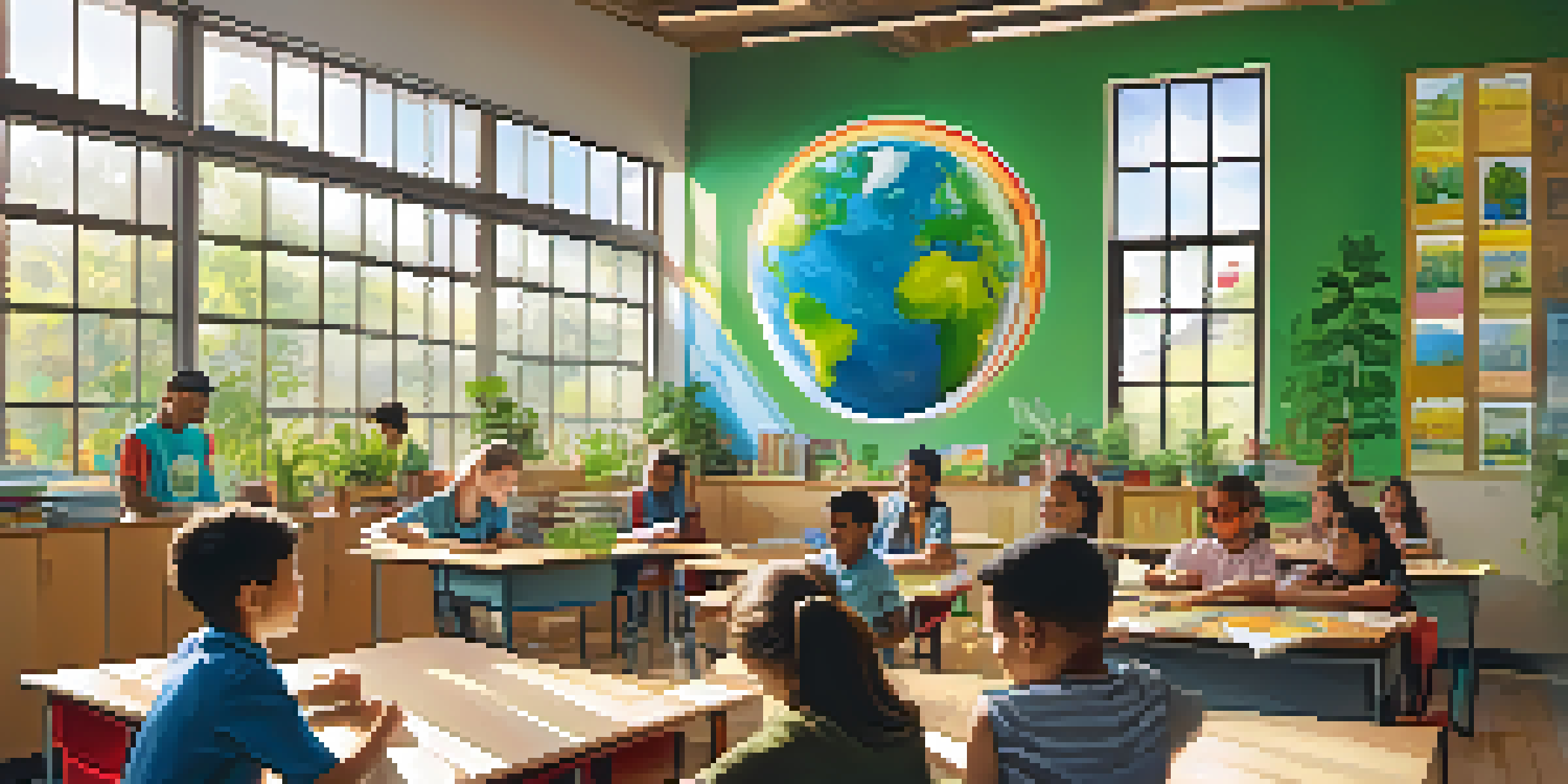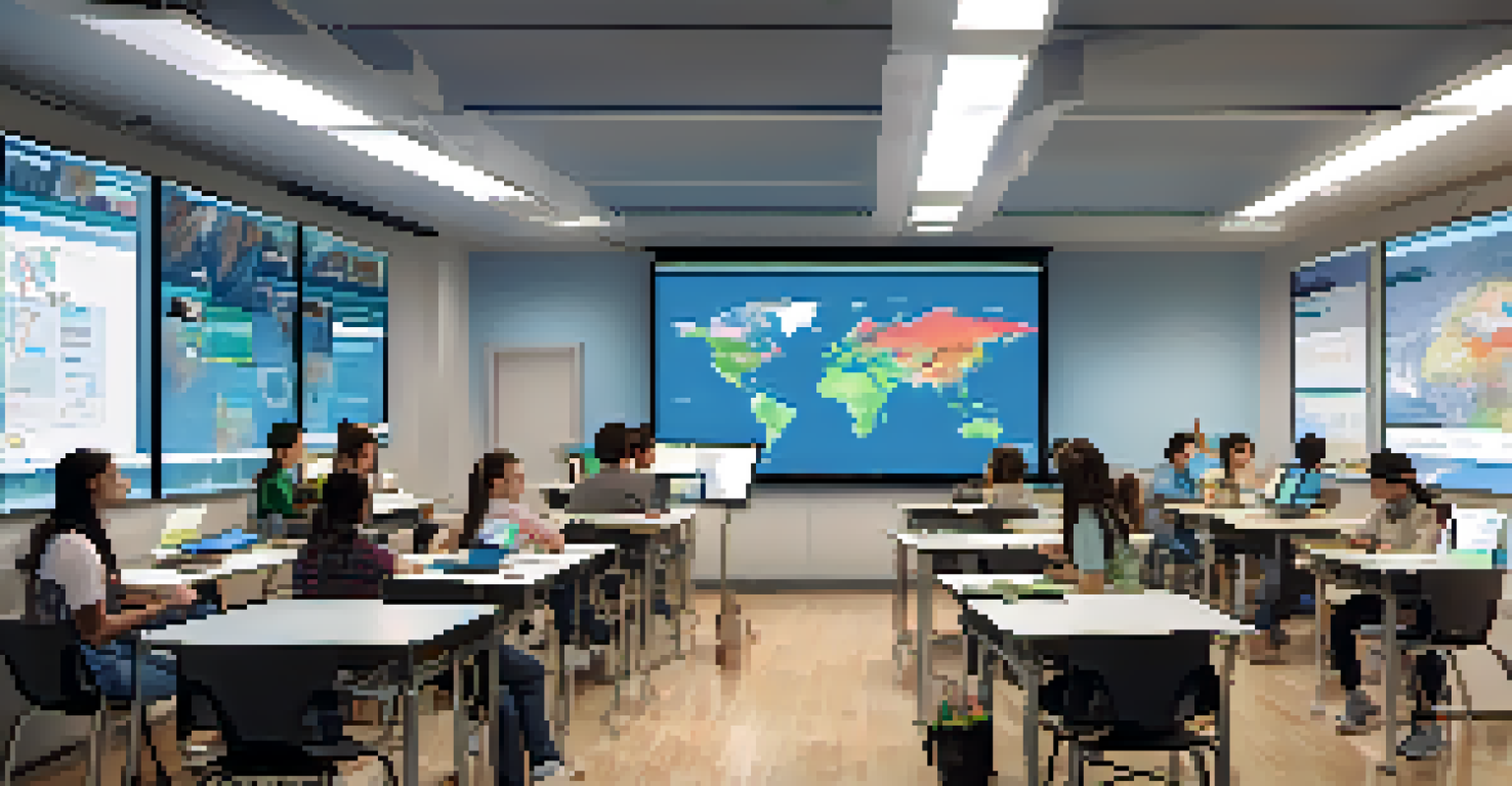The Impact of Climate Change on Global Educational Systems

Understanding Climate Change and Its Global Reach
Climate change refers to long-term shifts in temperatures and weather patterns, primarily caused by human activities. These changes are not just environmental; they ripple through every facet of society, including education. For instance, extreme weather events like hurricanes or droughts can disrupt school operations, forcing students out of the classroom and impacting their learning.
Climate change is not just an environmental issue, but a matter of social justice, affecting the most marginalized communities.
Moreover, regions already vulnerable to climate impacts—such as low-lying areas or those prone to natural disasters—face heightened risks. Schools in these areas may struggle with infrastructure that can withstand severe weather, affecting the safety and stability of educational environments. This vulnerability can lead to prolonged school closures, further hindering students' educational journeys.
As the world grapples with these changes, understanding the broader implications of climate change on education becomes crucial. It’s not just an environmental issue; it’s a social justice issue, affecting the most marginalized communities who already face barriers to quality education.
The Direct Effects of Climate Change on Students
Students are often on the front lines when it comes to the impacts of climate change. For example, heatwaves can make classrooms unbearable, reducing students' ability to focus and learn effectively. Prolonged exposure to high temperatures can also lead to health issues, which can further disrupt their education.

Additionally, climate-related disasters can lead to trauma and anxiety among students. These emotional challenges can manifest as decreased academic performance and engagement in school activities. The psychological toll of witnessing climate disasters can be overwhelming, affecting not just individual students but entire communities.
Climate Change Impacts Education
Climate change disrupts educational systems, affecting student learning and infrastructure.
It's essential to recognize that these impacts aren't just temporary; they can have long-lasting effects on students' educational trajectories. A generation of young learners may face hurdles that could prevent them from achieving their full potential, thereby exacerbating existing inequalities.
How Climate Change Disrupts Educational Infrastructure
Educational infrastructure is often ill-equipped to handle the increasing frequency and severity of climate events. Many schools, especially in developing countries, lack the necessary resources and resilience to withstand floods, storms, and other climate-related disruptions. This inadequacy not only affects the physical safety of students but can also lead to significant financial strains on educational systems.
Education is the most powerful weapon which you can use to change the world.
In regions severely affected by climate change, schools may be forced to close permanently or relocate, disrupting the education of countless children. The loss of educational facilities can lead to overcrowded classrooms in remaining schools, diminishing the quality of education. This situation can create a domino effect, where educational access becomes increasingly limited for vulnerable populations.
Moreover, repairs and rebuilding efforts can take years, further depriving students of their right to education. Investing in resilient infrastructure is paramount for ensuring that students can continue their learning, regardless of the climate challenges they may face.
The Role of Technology in Adapting Education Systems
Technology has emerged as a powerful ally in the face of climate change impacts on education. Online learning platforms and digital resources can help bridge the gap when traditional schooling is disrupted. For instance, during natural disasters, students can access lessons from home, ensuring that learning continues even when physical classrooms are inaccessible.
Moreover, technology can facilitate remote learning in areas affected by climate change. Students can connect with educators and peers beyond their immediate environment, providing them with diverse learning opportunities. This adaptability is essential for maintaining educational continuity in a world where climate events can strike unpredictably.
Technology Bridges Educational Gaps
Innovative technology can provide alternative learning solutions during climate-related disruptions.
However, the digital divide remains a significant challenge. Not all students have equal access to technology or the internet, which can exacerbate existing inequalities. Ensuring equitable access to digital resources is vital for leveraging technology effectively in the education sector.
The Impact of Climate Change on Curriculum Development
As climate change continues to shape our world, educational curricula must evolve to reflect these realities. This includes integrating environmental education and climate literacy into subjects across the board. By doing so, students can better understand the challenges posed by climate change and be equipped to address them in their communities.
For example, science classes can include lessons on sustainable practices and the impact of human activities on the environment. Social studies can explore the socio-economic implications of climate change, fostering critical thinking about global issues. This holistic approach to education not only prepares students for future challenges but also empowers them to take action.
However, curriculum changes require support from educational authorities and policymakers. Investing in teacher training and resources is crucial for effectively implementing this new approach. Without adequate support, the potential benefits of a climate-focused curriculum may not be fully realized.
Community Resilience and Education: A Symbiotic Relationship
Education and community resilience are interconnected, particularly in the face of climate change. Strong educational systems can foster resilient communities by equipping young people with the skills and knowledge needed to address climate challenges. When students learn about sustainability and environmental stewardship, they can take these lessons back to their communities, promoting collective action.
Conversely, resilient communities provide a supportive environment for education to thrive. Communities that prioritize safety, infrastructure, and health create conditions where students can focus on learning. This symbiotic relationship highlights the importance of holistic approaches to both education and community development in mitigating the impacts of climate change.
Curriculum Must Address Climate Issues
Integrating climate education into curricula is essential for preparing students to tackle environmental challenges.
Engaging local stakeholders, including parents and community leaders, in educational initiatives can enhance this resilience. By working together, communities can develop tailored solutions that address their unique challenges while fostering a culture of learning and adaptation.
Looking Ahead: Strategies for Future Education Systems
As we face an uncertain future due to climate change, it’s crucial to develop strategies that ensure educational systems can adapt and thrive. This includes investing in climate-resilient infrastructure, integrating climate education into curricula, and leveraging technology for learning continuity. Proactive measures can significantly reduce the risks posed by climate change to education.
Furthermore, collaboration between governments, educational institutions, and communities is essential for creating effective solutions. By pooling resources and knowledge, stakeholders can develop innovative approaches to tackle the challenges that lie ahead. This collaborative spirit can lead to a more sustainable and equitable educational landscape.

Ultimately, the goal should be to create educational systems that not only survive climate change but also contribute to solutions. By fostering a generation of informed and engaged citizens, we can collectively work toward a more sustainable future, ensuring that education remains a cornerstone of resilience in the face of adversity.